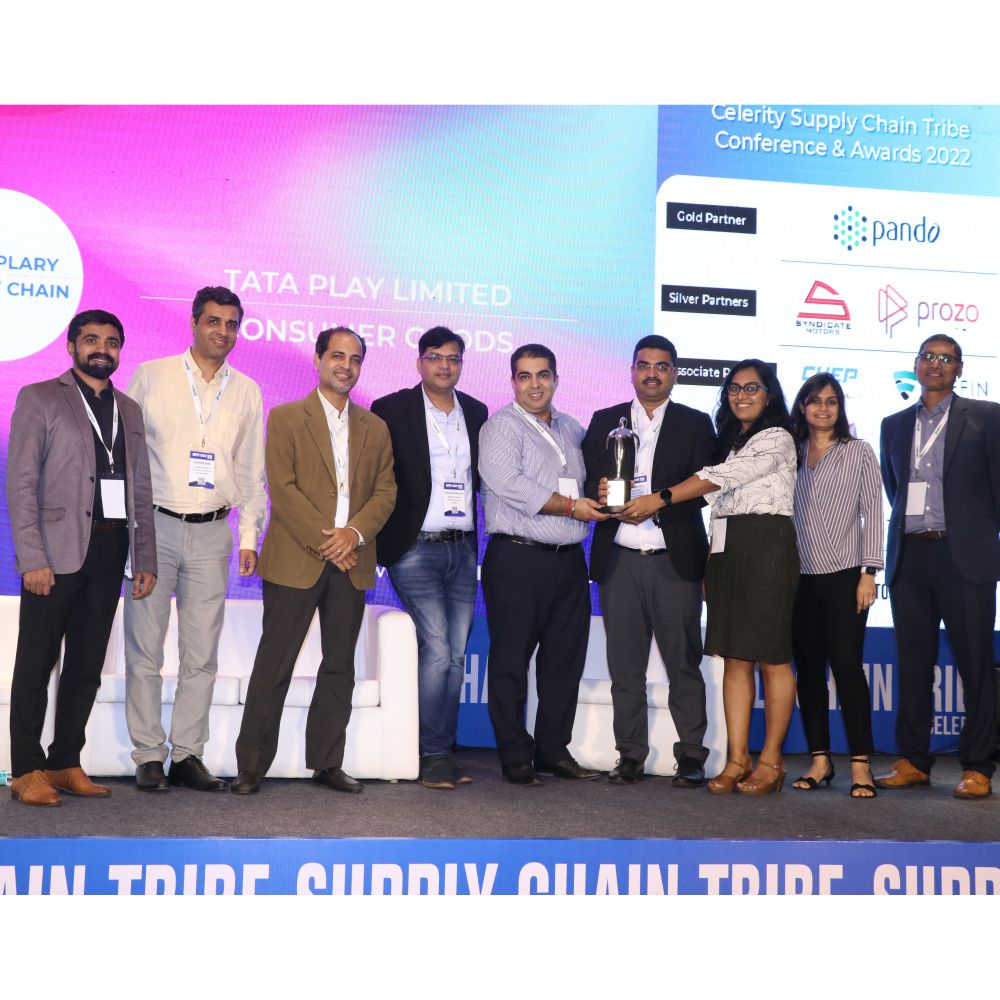Tata Play is one of the nine winners of the Celerity Exemplary Supply Chain Awards 2022. The winners were decided after going through an extensive nomination form filled by the companies and a stringent evaluation by a senior level Jury. So read their case study to understand their winning formula.
Overhauling the entire process change efficiently, Tata Play was able to augment the supply chain successfully and leaving a successful trail for others to follow. Here’s the short account of our Exemplary Supply Chain company – Tata Play and the way they led the transition effectively…
With use of standard ERP system along with challenge of training resources frequently, Tata Play was faced with other challenges such as Low visibility of processes to all stakeholders; Difficult to configure approval matrices; Different systems for entire procurement process; and Difficult to use UI/ UX for internal and external stakeholders.
Highlighting the challenges, Neha Gupta, Senior Manager, Tata Play Ltd., elaborated, “The largest tool for any procurement function is Source to Pay tool, which covers the entire organization across the multiple functional teams, all regional offices and partners.” For the implementation of new S2P tool, the company faced and resolved multiple challenges on these fronts:
Integration: The biggest challenge was to integrate the existing system with the new proposed tool. To go ahead with such integration of S2P tool with and a legacy ERP system (Tata Play had to ensure a smooth transition and sustainable deployment with minimum failures in BAU).
Process Mapping: As the company has been using existing system for 10+ years, it had built in lot of customisations and mapping those customisations into the new tool was difficult considering the fact that process flow for S2P was very different than existing system.
Data Field Mapping: Due to difference in terminology, there was a challenge to have all the fields of our existing system, which were getting captured replicated in new system. This challenge got accentuated by the fact that any field change in the new tool would reflect across the entire customer base of platform provider.
Change Management: Launching a tool of such a scale has been challenging in many aspects as this change had an organisation-wide impact. The project was required to resolve multiple issues, guidance across the different functions, driving accountability and most importantly ensuring delight and efficiency as result.
APPROACH & METHODOLOGY
Integration Approach – To start with the integration, “We first and foremost figured out the number of touchpoints and number of fields where both the systems would be interacting and deciding on the process of interaction. This was a critical element as our S2P tool has a lot of new functionalities such as Special characters, exponential values which were not accepted at ERP end. Hence, we introduced a middleware layer which was not only pushing the data from one system to another but also validating the data,” added Neha Gupta.
Process Mapping: To overcome this challenge, “We started with Identification of mandatory fields required in SAP and mapping the same with Zycus fields by utilisation of existing fields and creation of custom fields which ensured that all the data which is mandatory in SAP gets captured in a correct fashion. We also created multiple master base in new tool to ensure correct data pick up and flow to ERP,” she stated.
Data Field Mapping: In a SAAS based S2P tool, fields are standard, and any modification leads to changes in the tool across the players. To overcome the challenge of mapping multiple data fields, the company found out the fields, which were not being utilised across any player and customised those to the organisation’s requirements.
Change Management: The team got a buy-in of key stakeholders by educating and creating awareness. “We deployed a dedicated project team for the effective roll-out of the project. We also imparted specific need-based trainings to the stakeholders along with having a help desk for easy and quick resolution on challenges. Strategic communication was done from executive sponsors to entire organisation,” elaborated Neha Gupta.
OUTCOME
As the roll-out of the modules happened for the entire organisation and across pan-India locations, the benefits of same have been 3-fold:
- For SCM, as a procurement function, deliver better results on savings. The company was able to reduce turnaround time (TAT) from 43 days to 7 days by moving considerable amount of procurement to Catalogue. The new tool allowed to eliminate redundant approvals along with making it a highly transparent approval process. There is better analytics and insights on data available in system.
- For users, the process has improved with a fairly simple to deal with UI /UX, and nomenclature. There is greater visibility on approvals and faster processing of their requests.
- To our external partners, it acts as a single tool for transactions with Tata Play where they can register / update their organisation details, track the issued PO, participate in RFQ and e-bidding events, check and give inputs on performance evaluation through a single platform and single login ID.

Categories

Magazine Editions






















